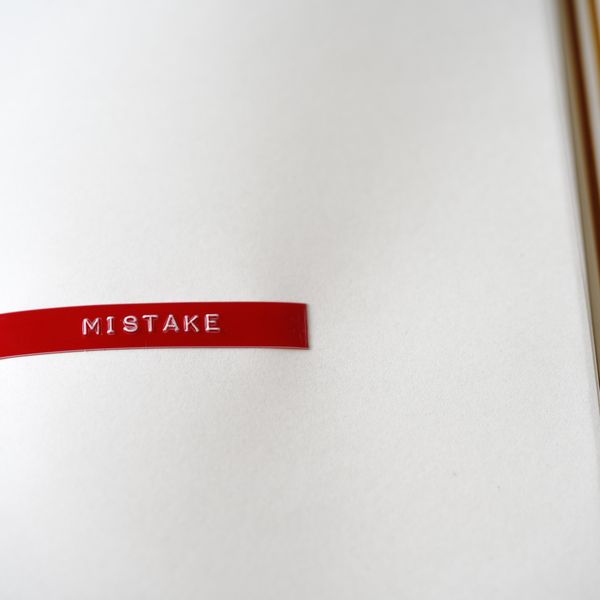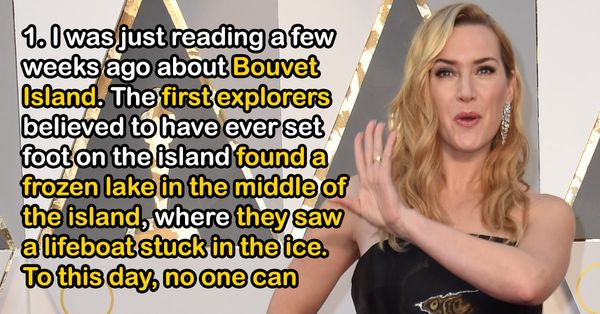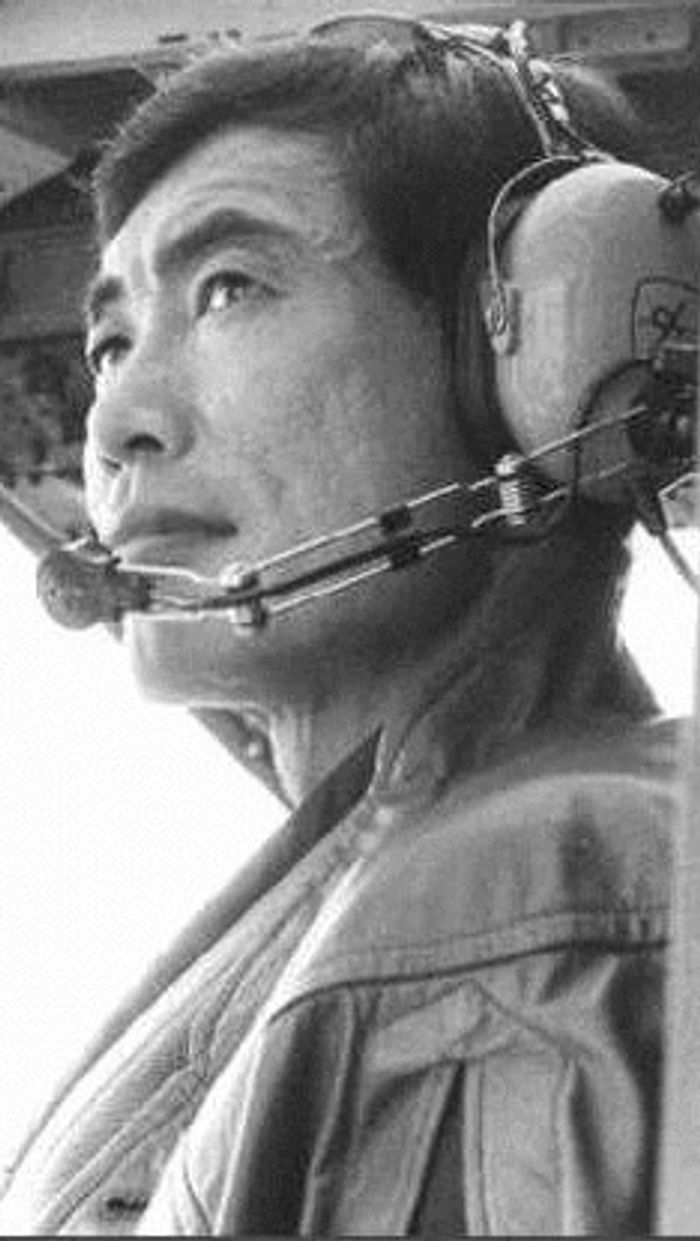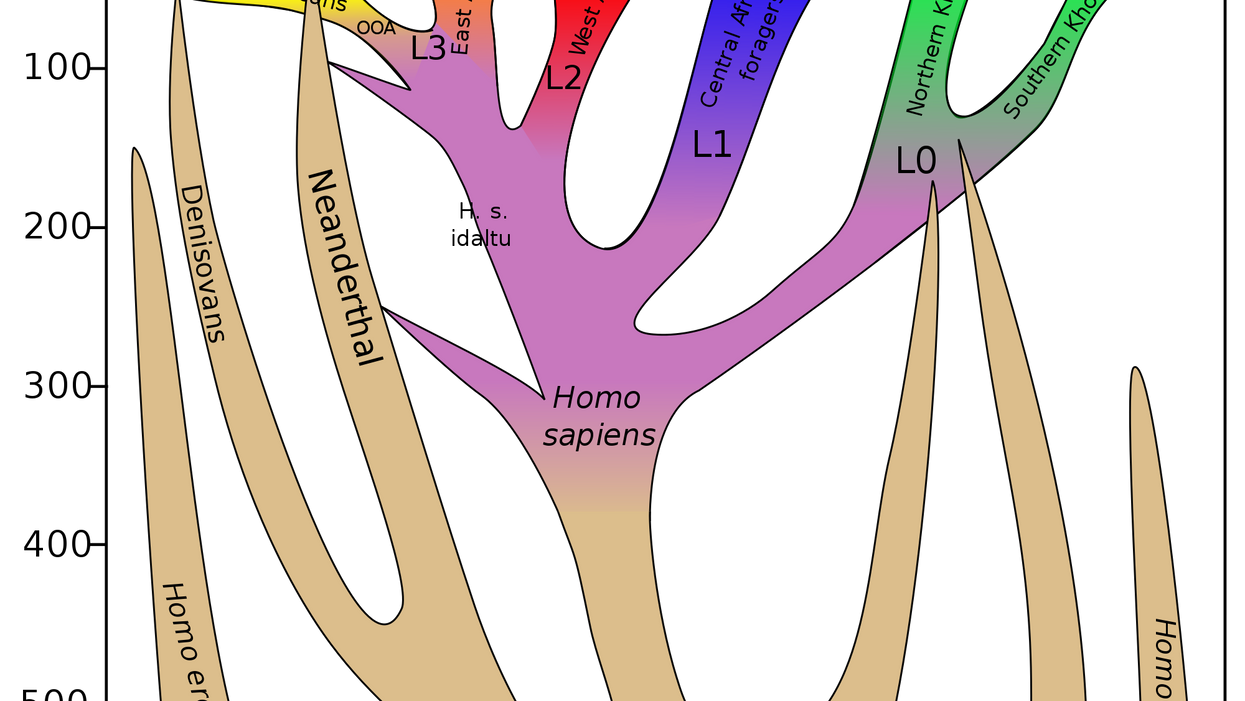Marriage Equality Come to California
George Takei Statement on Proposition 8
George Takei on Casting of John Cho as Sulu
George Takei Issues Statement on Daily Variety Story
Catfish, Scholars, and a Geisha Party
Oscars: The Luckiest of the Best
An Emperor, Abe Lincoln, and Four Presidents
Seattle: The Crucible of Imagination
Hawaii, Chicago, Tulsa, and Kiribati
Hooray for Hollywood; Boo on Secession
Japan - From The Past to the Cutting Edge
July, 1999, LOS ANGELES, CA - It's hard to believe, but here we are now halfway past the final year of this century. For that matter, the final year of this millennium. It does give me a sense of the momentousness of time.
July began with a singularly 20th-century experience that resonated with portents both terrestrial and extra-terrestrial. I did a Star Trek convention in Roswell, New Mexico, the place that claims to have had a visitation from outer space just a bit more than fifty years ago. There couldn't be a more fitting locale for a Star Trek con. My manager, Brad Altman, and I flew into Albuquerque, then he drove me the three-plus hours down to Roswell across the sun-scorched New Mexican landscape. We saw incredibly picturesque billows of dark clouds edged in radiant light. Then, off in the distance, we saw a flash of silent lightning on the horizon. As we drove on, we saw more flashes with increasing frequency. Before we knew it, we were driving through a storm of lightning bolts spearing the ground all around us. Right, left, front and rear. All with no sound, no rain. We drove on through this bizarre storm for about five minutes and suddenly, it was over. As if we had crossed some invisible meteorological border, the soundless lightning flashes stopped. But a few minutes later, like bullets fired at us from the sky, hailstones began falling on our rental car. The pounding got so loud, it seemed like we were being attacked by some fighter craft from above. We could barely see beyond the windshield. Then, as suddenly as it started, the hail assault was over. The sky cleared and we were driving through picture postcard New Mexican scenery again.
An hour later, a Days Inn Motel, looking brand spanking new, appeared on the roadside. We drove past a simple but tidy Travel Lodge, then a 7 Eleven, a Burger King, a Ramada Inn, the signposts to Americana U.S.A. Before long we were driving down Main Street with dress shops, thrift stores, a bookstore, and a Denny's on the corner. Then we came upon a 1930's art deco movie theater that obviously had been converted to more distinctive use. There was a crowd anxious to get in waiting under the sun bleached, jazz era marquee. It read, "U.F.O. Museum." We had arrived in Roswell, New Mexico. It was the very picture of a pleasant, upbeat community but with a singular distinction. The unidentified flying object was not only a local phenomenon and an alleged government conspiracy but a thriving industry as well.
The Chamber of Commerce was one of the sponsors of this Star Trek convention. It began with a ribbon cutting at a specialty store called Alien Zone. Roswell mayor, Bill Owen, was there to greet the public and the press. The local Toyota dealership was providing transportation for the celebrities and dignitaries. The business establishment was solidly behind this Star Trek convention. Chatting with Mayor Owen after the event, I learned that he was a native of Roswell but had been an FBI agent in Washington, D.C. in another life, as had his attractive wife. It occurred to me that an "X Files" convention could do well here as well.
Every convention has something unique about it but I must confess Roswell is the only place where I did my autograph signing sessions in a gallery filled with displays of mock-up alien visitors to Roswell back in 1947. They are depicted as about four feet tall with swelled, bald heads and enormous, dark, haunting eyes. Their spindly, elongated limbs are attached to a thin torso. Why do these alien life forms consistently seem to take on somewhat anthropomorphic shape? Is it that the people who have these encounters cannot see alien life taking forms other than basically our own? Much as Japanese artists who saw white people for the first time with Commodore Matthew Perry's visit to Japan in 1853 drew Caucasians with unambiguous Japanese features distinguished only by strange costumes and odd beards. If we are going to be venturing beyond this planet, it seems to me, we are going to have to have much more open minds and far greater imagination.
The consistent element with these conventions however, is the fans. Wherever we go, they are enthusiastic, dedicated and celebrants of the Star Trek view of pluralism. "Infinite diversity in infinite combinations" was vibrantly on display in Roswell in the combinations of ethnicities, lifestyles and ideas. May it live long and prosper.
Ethan Philips, that wonderful actor from one of our spin-off shows, "Star Trek: Voyager," was the other guest at this con. What a terrific stand-up comic he is! His performance at the convention dinner was painfully funny. Without any sense of shame or conscience, he told "my wife" jokes with his long-suffering wife right there in the audience in front of him. The crowd roared as she sat impassively in its midst.
I'm writing this on July 14. Tomorrow morning, I'm off to another convention in Raleigh, North Carolina with Walter Koenig, Jimmy Doohan and Nichelle Nichols. We keep on trekking, boldly going wherever this trek will take us. Next month, I'll be in Chicago on August 5, on the Navy Pier celebrating a summer festival. Stay tuned.
September, 1999, ATLANTA — Last month I marveled at the myriad ways in which we are now interconnected technologically -- satellite communication, supersonic transportation and the internet (see "What's New" for August). On a recent trip to Atlanta I experienced the substance of our human interconnectedness more profoundly than I have ever felt before.
As a trustee of the Japanese American National Museum, I flew to Atlanta for the opening of two of our traveling exhibits, "America's Concentration Camps" and "Witness: Our Brothers' Keepers."
"America's Concentration Camps" is an exhibit on a dark chapter of American history that is also a story of my early boyhood. When I was 4 years old, Japan bombed Pearl Harbor and the U.S. was plunged into the fires of World War II. Our nation -- despite its ideals -- failed to draw the distinction between the imperialism of Japan and the citizenship of Americans of Japanese ancestry. With no charges and no trial, but simply based on race, Japanese Americans were forcibly rounded up from our homes on the West Coast and herded into 10 barbed wire camps in some of the most god-forsaken parts of the country.
As detailed in my autobiography To the Stars, I was taken with my family from our home in Los Angeles to a camp in the swamps of Arkansas. A year later we were moved to a desolate, wind-swept dry lakebed in northern California near the Oregon border. Four years of my childhood were spent confined behind the barbed wire fences of American concentration camps. Not until the end of the war did we return to Los Angeles.
For my parents, it was the most horrific experience of their lives. Everything was lost — property, business and, most of all, freedom. As astonishing as this story may seem to many Americans, it did happen right here in this country. The "America's Concentration Camps" exhibit had closed at the Ellis Island Museum in New York after a year-long run and opened in August at Atlanta's William Breman Jewish Heritage Museum.
A second exhibit, "Witness: Our Brothers' Keepers," is another extraordinary story with an ironic linkage with the Jewish community. Despite the incarceration of their families, an amazing number of young Japanese American men and women put on the uniforms of the U.S. military and fought with uncommon valor in both the European and Pacific theaters of the war. The all-Japanese American, 442nd Regimental Combat Team returned from the battlefields of Europe as the single most decorated American military outfit.
A strange irony of this war, however, is that another Japanese American outfit, the 522nd Field Artillery Battalion, forced open the gates to Dachau, the Nazi death camp that held Jewish, Gypsy and homosexual inmates from throughout Europe. While their own families were confined behind American barbed wire fences, these Japanese American soldiers were liberating the prisoners of the Nazis from their barbed wire incarceration. Certainly, the American concentration camps came nowhere close to the grotesque horrors the Japanese American soldiers found in the Nazi death camps. Providentially, there was no American policy of systematic elimination of people. But these Japanese American soldiers undoubtedly felt some poignancy in their linkage with the Jewish prisoners.
I certainly felt this linkage as I mingled among the people gathered for the opening of the exhibits at the Breman Jewish Heritage Museum. After the formal program where I shared the stage with Daniel Inouye, the war hero and U.S. Senator from Hawaii, my duty was to informally impart some of my childhood memories with the people in attendance as I moved among the exhibits. I found myself in turn deeply moved and enlightened by the stories that the Jewish people there shared with me of relatives lost to the Nazi holocaust. There is a horrific difference of degree in our stories but the lesson to be learned from both our histories is a common one. Bigotry combined with hysteria is the hideous ingredient of massive injustice.
This very same lesson was underscored the following day on a visit to the Dr. Martin Luther King Jr. Memorial in Atlanta, an important landmark of the American civil rights movement. Dr. King's birthplace is there, as is the Ebinezer Baptist Church where he, his father and his grandfather preached. His marble tomb rests on an island in the middle of a calm reflecting pool. Across the street is a museum of Dr. King's life and the civil rights movement.
As I moved through the exhibits, I was struck again by our interconnectedness. Bigotry takes on many forms. It manifests itself in different ways. Dr. King and the civil rights movement challenged the stony face of institutionalized bigotry. But he also confronted the bigotry and violence of his own people -- the rage that rises out of abject despair. His courage in facing down both the Black Panthers as well as a Sheriff "Bull" Connors, the personifications of racism in both races, was profoundly inspiring. He refused to be lowered to the depths of any bigot -- black or white. He was a firm apostle of non-violent social change.
I remembered a long ago day in the 60s, when I met Dr. King. I was performing in a civil rights musical titled "Fly Blackbird" in Los Angeles. The cast was asked to sing a few numbers from the show at a huge rally where Dr. King was to be the main speaker. It was a massive gathering at the L. A. Sports Arena. When he spoke, Dr. King's words connected mightily. He transported the crowd with his soaring eloquence. It was after this speech that we were escorted to Dr. King's dressing room. I will never forget this meeting. I remember taking his proffered hand. I remember the thrill of the human connection with an extraordinary man. Through his touch, I felt somehow linked to his ideals, his vision and his courage. It was this linkage that surely strengthened my participation in the civil rights movement. It was certainly this inspiration that galvanized me toward the movement to gain redress for Japanese Americans for our incarceration during World War II. It was his faith in the power of the American system and its ideals that invigorated me. And in 1988 -- more than four decades late, but ultimately nevertheless, this nation acknowledged its terrible mistake and Congress passed the redress bill for the wartime incarceration of Japanese Americans. Dr. King's spirit was there with me in this struggle as well.
Our lives and our communities are not separate. We are inextricably interlinked. What happens to one group impacts another. Yes, we may live in an amazing technologically interconnected world. But ultimately, what gives substance to the technology is our human interconnection.
October, 1999, LOS ANGELES — It felt like déjà vu, and I didn't like it at all. In September, I participated in a press conference in Los Angeles and a U.S. Justice Department symposium in Washington, D.C. The topic at both events -- minorities on television.
For decades, television network executives have been making ringing proclamations of their responsibility to reflect the great diversity of America. When called to task for their failings, they always asserted that they would do better the next season. But without a trace of embarrassment, the four top networks, CBS, NBC, ABC and Fox, revealed a slate of 26 new shows for the 1999-2000 season in which all the lead roles and all the regular supporting roles are white. Bluntly put, they are presenting a version of America that is a bald-faced lie. I call it a white-faced lie. Look around any American city and one can clearly see that ours is a multi ethnic, multi racial, multi cultural society. What makes us unique among nations is the fact that Americans are the only people in the world who do not share a common gene pool.
Television plays an awesomely important role in race relations. It shapes and forms perceptions and attitudes about the people with whom we live. Used constructively, television can be a vital element in building a healthy society of diverse people. Used irresponsibly, it can divide and inflame.
Asian Americans are keenly aware of this power of television. The portrayal of Asian Americans in one-dimensional stereotypes, or, even worse, our absence from television, underscores the view of Asian Americans as not truly American. No matter how many generations we have been here, Asian Americans still are seen merely as extraordinarily Americanized foreigners. Whether in news coverage or entertainment programming, this kind of simplistic portrayal strips us of our variety and complexity and reduces us to just the "other." Thus, the suspected transgression of an individual Asian American casts a veil of suspicion on all Asian Americans. Asian American scientists are viewed with suspicion as possible spies for foreign nations. Our political contributions are questioned with no basis other than our Asian surnames. Over half a century ago, because this country couldn't recognize the distinction between Americans of Japanese ancestry and the Imperial Japanese government, all Japanese Americans on the West Coast were incarcerated in American concentration camps during World War II.
In offering a slate of new shows void of minorities, the four networks are reinforcing a dangerous fantasy — the fantasy that America is a white nation. This vision feeds directly into the delusions of white supremacists. It sustains their racist notion that minorities don't belong in America and need to be eliminated. In the last few months, three Asians have been killed in hate crimes in Illinois, Indiana and, most recently, here in my hometown of Los Angeles. Do the television decision-makers think they are not in any way connected to these troubles?
How can television have sunk so low since those halcyon years of Star Trek more than three decades ago? Star Trek creator Gene Roddenberry believed in the credo, "strength in our pluralism." He envisioned the Starship Enterprise as a metaphor for starship earth in all its great diversity. The crew of the Enterprise reflected the composition of the many people that inhabit this planet working in concert. Roddenberry created a show that resonated with the television viewing audience, not only in this country, but all over the world. And the show has engaged the imagination of this global audience for more than thirty-three years. If television is an imitative medium, then there could be no better model for television executives to imitate than the vision of Gene Roddenberry. Let's go back to the future.

















































